Welcome to Color Theory Outfit Combinations Part 2!
Last week, we started exploring color theory and how it applies to creating new outfits from our existing closet. 🌈
In the early days of slow fashion, there was the impression that a sustainable closet meant a minimal, neutral wardrobe. Part of the idea was that neutrals generally go together quite well so this can maximize your closet's versatility and longevity.
Neutral dressing is certainly beautiful and if it suits your style, we love to see it! But it's not the only way to wear the heck out of your closet.
Even if your closet is filled with many colors of the color wheel, the pieces in your closet can still feel interchangeable — we just have to know how to harness them.
That's what this color theory outfit combinations series is all about — showing you the possibilities of color, no matter which colors are in your closet.
Because while it feels like some people do just have a natural eye for effortlessly creating color combinations that work, these skills are actually quite learnable.
Color theory is an art, but it's also a science.
Introducing the Analogous Color Scheme
In part one, we explored monochrome dressing — how sticking to one color can help you create many outfits.
Today's installment will venture just slightly away from that. We'll explore the analogous color scheme: colors that are right next to each other on the color wheel.
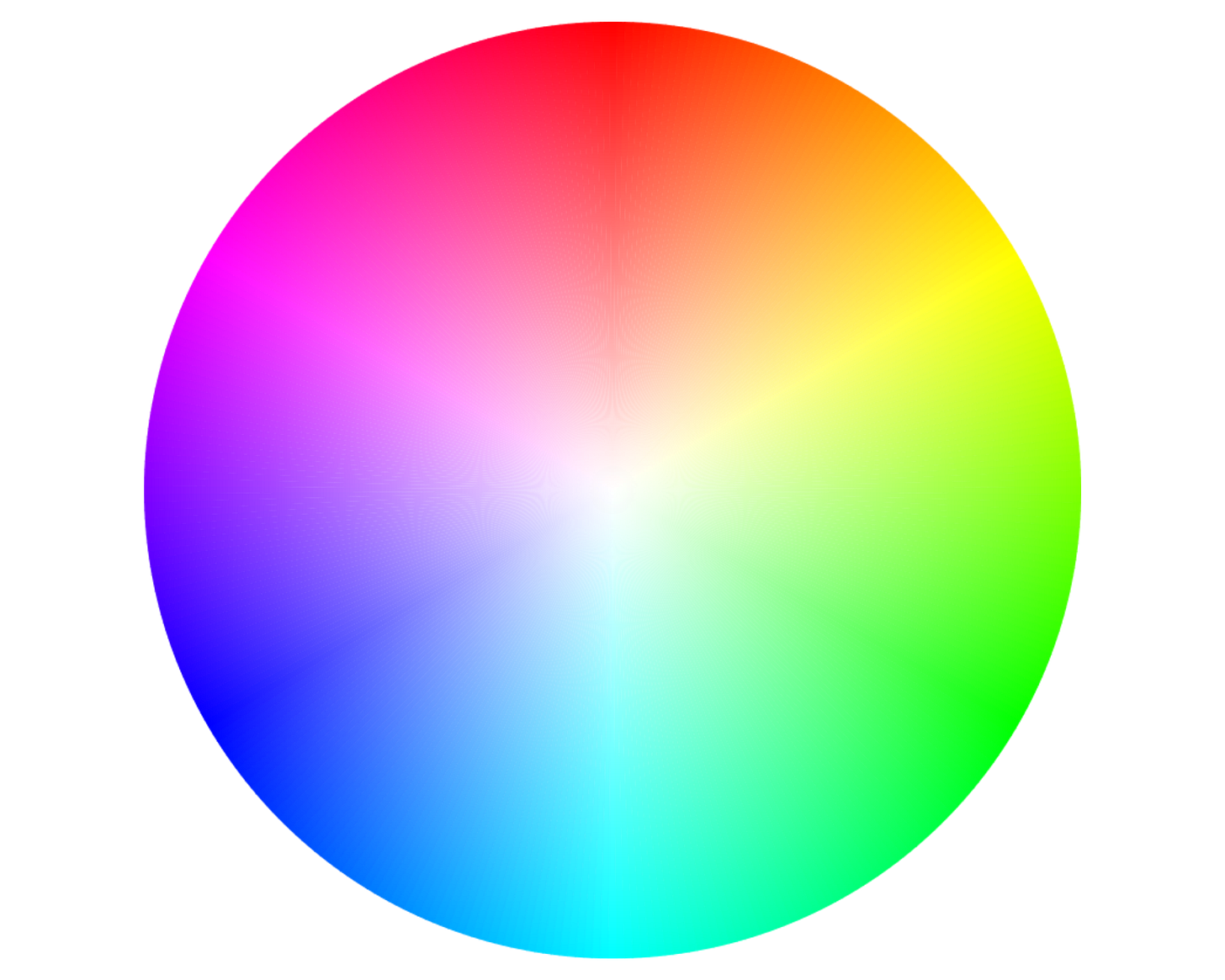
A color palette from nature
Analogous design and style often feels cohesive because we're used to seeing this color scheme appear in nature:
Red, orange, and yellow leaves during autumn;
Soft purple, pink, and orange during a sunset;
Red-orange, orange, and yellow during a sunrise;
Green, blue, and purple succulents;
Yellow-green and green leaves with the backdrop of a blue sky;
Or green grass along the coast of a blue and blue-green ocean.
In graphic design and interior design, an analogous color scheme is often described as appearing in groups of threes with a 60-30-10 ratio. It includes 60% of the dominant color, 30% of a secondary or supporting color, and 10% as an accent.
Analogous Color Schemes Applied to Style
That 60-30-10 ratio is a lot easier to achieve in a webpage design — where you have access to an infinite amount of digital colors — than it is when styling from our closets.
So we're not going to approach it with such a strict formula. The goal is to maximize what we have, after all.
And in some (or even many) cases, we will only have two of the three analogous colors. But that can still create a harmonious combination.
Examples of analogous color palettes (traditional)
Red, red-orange, and orange
Red, orange, and yellow
Orange, orange-yellow, and yellow
Orange, yellow, and green
Yellow, yellow-green, and green
Yellow, green, and blue
Green, green-blue, and blue
Green, blue, and purple
Blue, blue-purple (violet), and purple
Blue, purple, and red
Purple, purple-red (magenta), and purple
Examples of analogous color palettes with two colors (simplified)
Red and orange
Orange and yellow
Yellow and green
Green and blue
Blue and purple
Purple and red
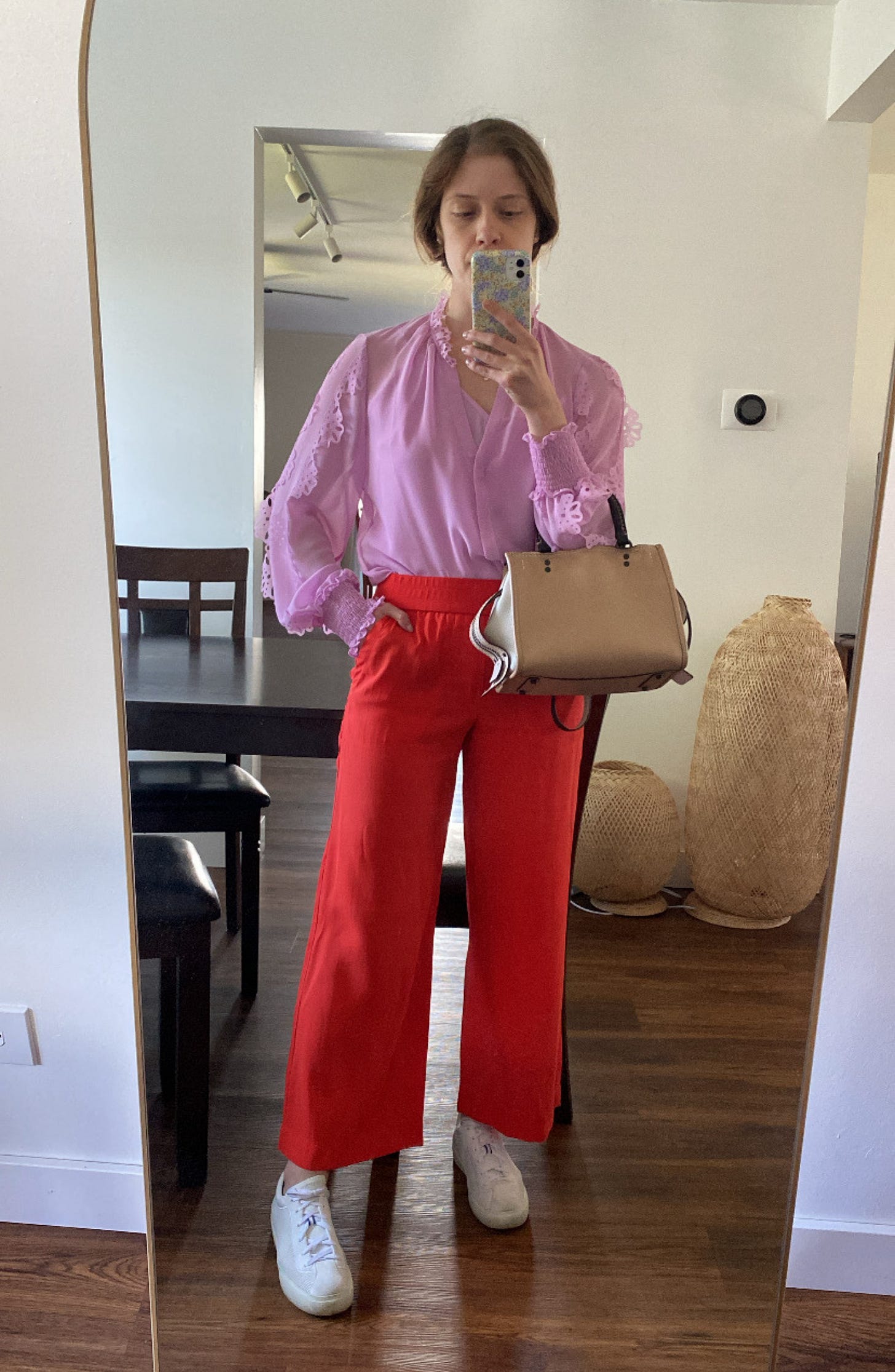
How to Make Analogous Dressing Work For You
There isn't just one way to approach analogous dressing. And as we explored in part one, a color like “red” or “green” doesn't look just one way. We have other elements like the chroma (saturation) and value (lightness/darkness).
So even if you don't consider your style bold or colorful, there are a number of different ways you could explore analogous dressing in your closet.
Start Simple: Pick Just 2 Colors
This is the easiest approach — simply pick a piece in your closet in one color and pair it with another item that has the next color in the color wheel.
Start with whichever you have fewer color options in. So if you only have a couple of colorful pants/skirts but many colors in tops, you would start with picking a pair of bottoms first.
And then think about what colors are next to it on the color wheel — do you have any tops in that color?
For example, if you have a purple pair of pants or a purple skirt, that might mean pairing it with a blue top. Or it could also mean going the other direction on the color wheel and selecting a red or pink top.
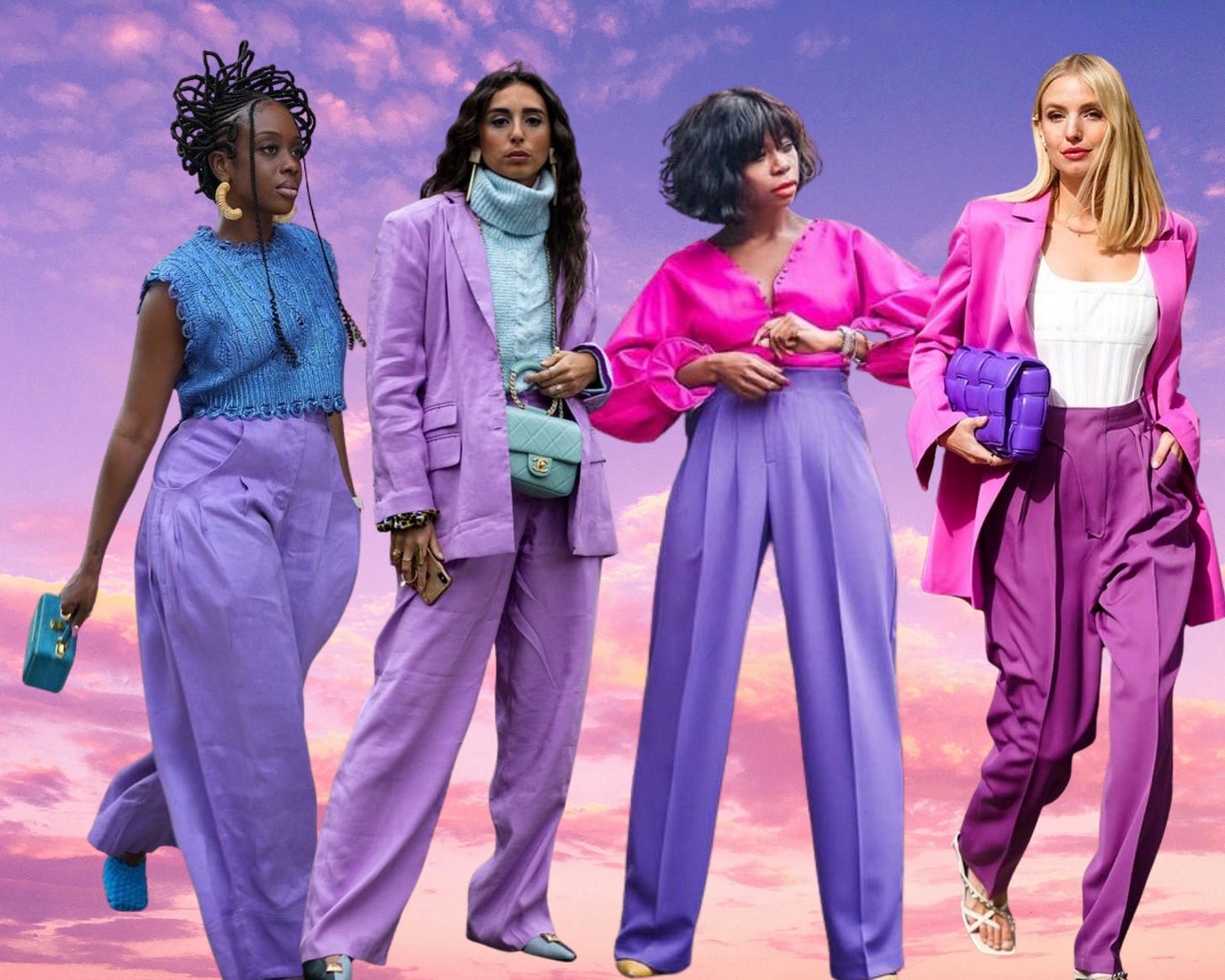
Go Full-On: Add a Third Color
Maybe you want to stop there! But if you wanted to go full-on analogous, you could add a third color that is next to one of the colors on the color wheel.
For example:
Pair those purple pants and blue top with a pink accessory (like heels or a handbag featured in the examples below)
Add a pastel green blazer to a light blue sweater and lilac trousers
You could add in turquoise jewelry to a blue top and purple bottoms (the three analogous colors would be green-blue, blue, and purple).
Or you could layer up, pairing a true purple and blue-purple (violet) with blue.
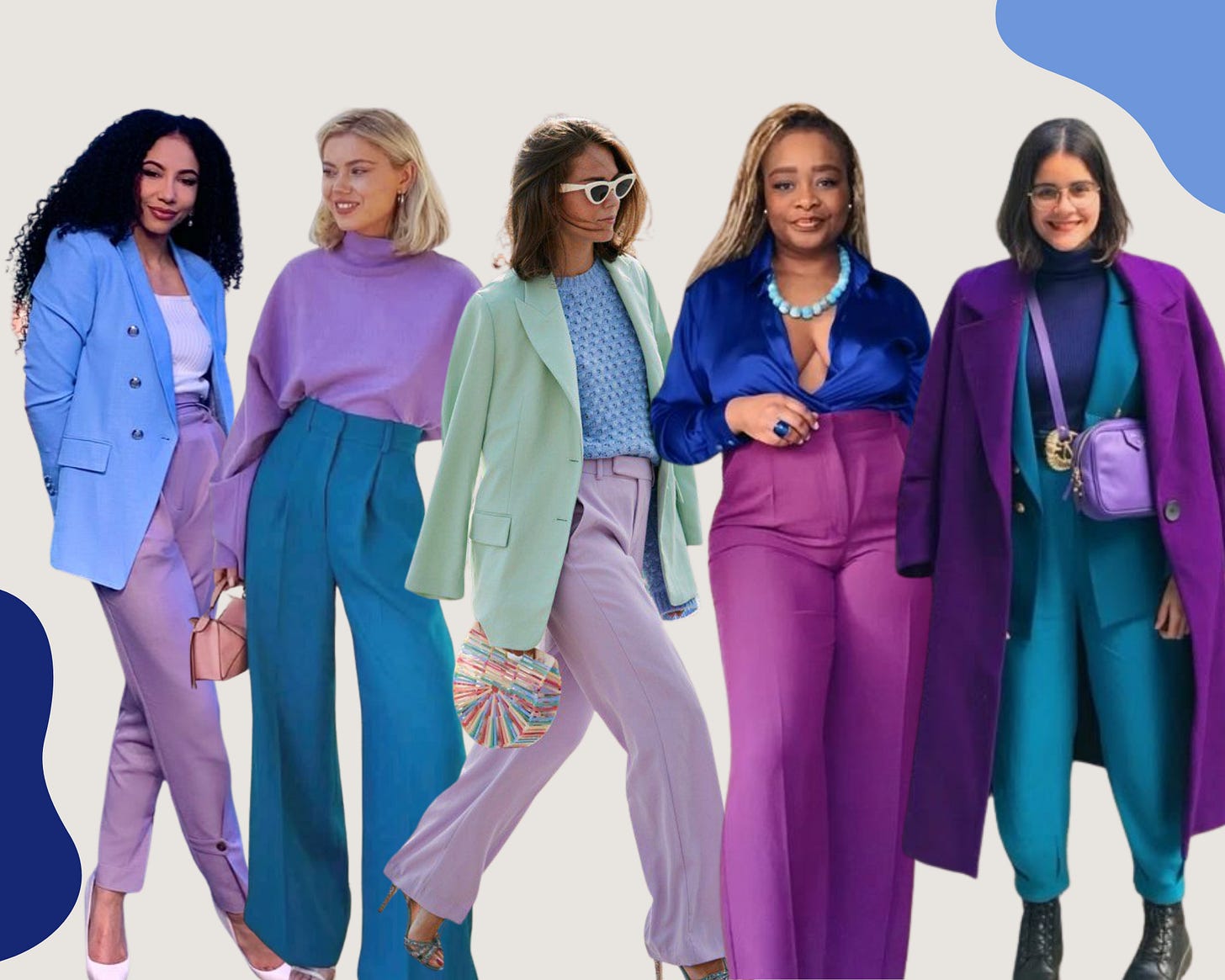
As you can see, we have a lot of options here!
Too Much? Tone it Down
So far these looks have all felt on the more vibrant side. If that doesn't feel true to your style, there are still many ways to approach analogous dressing.
Add a Neutral:
If a full-on outfit with orange and yellow is feeling overwhelming, for example, add a neutral tee or blouse underneath. You could also add a neutral layer on top or simply keep the analogous color to the accessory alone.
Choose Desaturated Pieces:
You can also have an analogous color scheme with muted tones. Think: soft butter yellow and a muted green or a dusty red paired with a lavender.
Darker colors can have a similar effect and almost feel like a neutral. Think: navy, eggplant, and forest green.
Denim can also feel like a neutral element in an outfit — so one approachable way to implement analogous dressing could simply be wearing blue jeans with a purple top or a blue denim jacket with green pants.
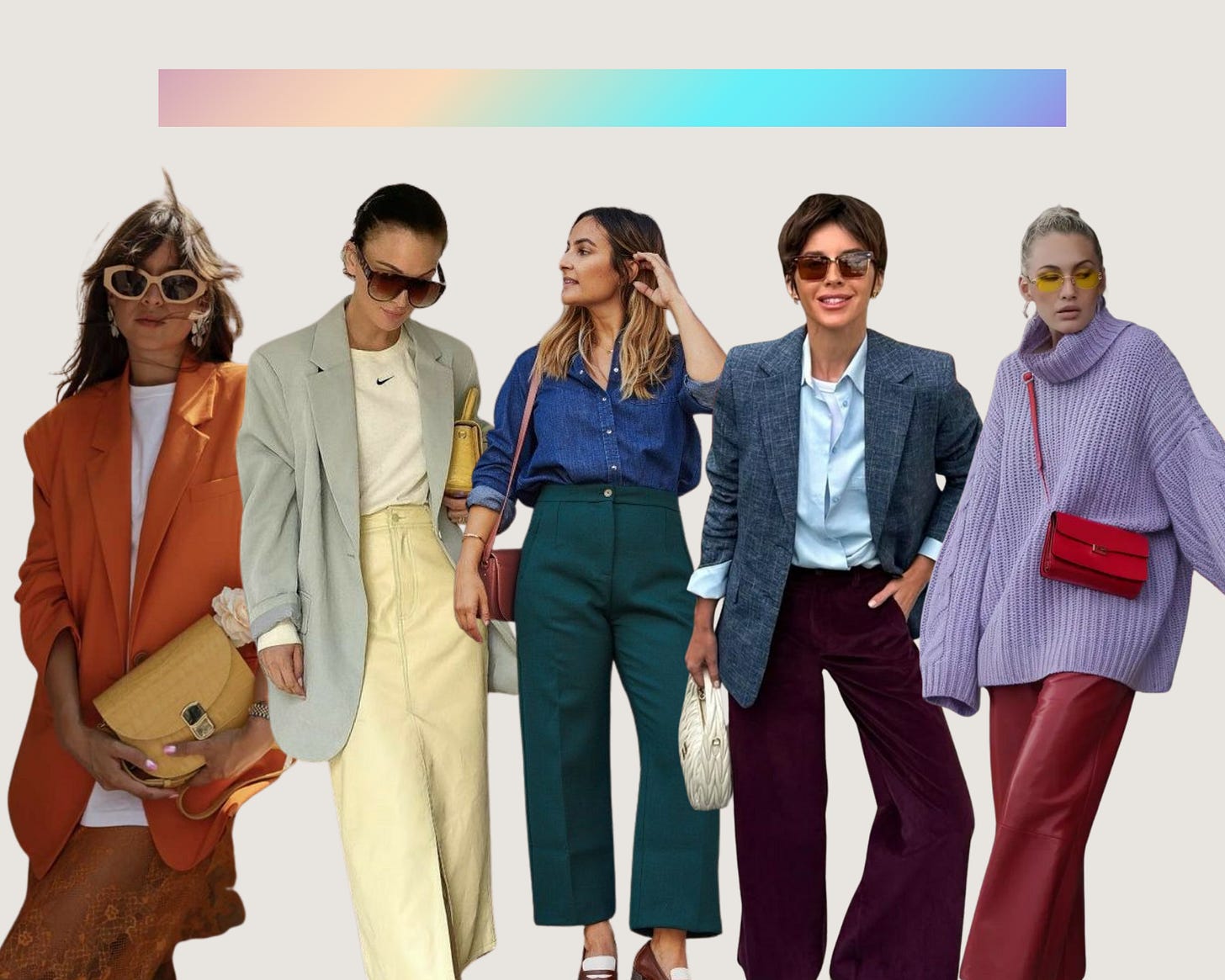
Explore a fully neutral color palette:
While many neutrals are outside of the traditional color wheel, we can still apply similar principles of an analogous color scheme if we look at the undertones.
For example:
Pair a camel that has yellow undertones with a dark brown with orange undertones
Pair beige trousers with a yellow undertone with a dark burnt orange
Pair olive green with a beige or tan that has a yellow undertone
Pair navy with an olive green
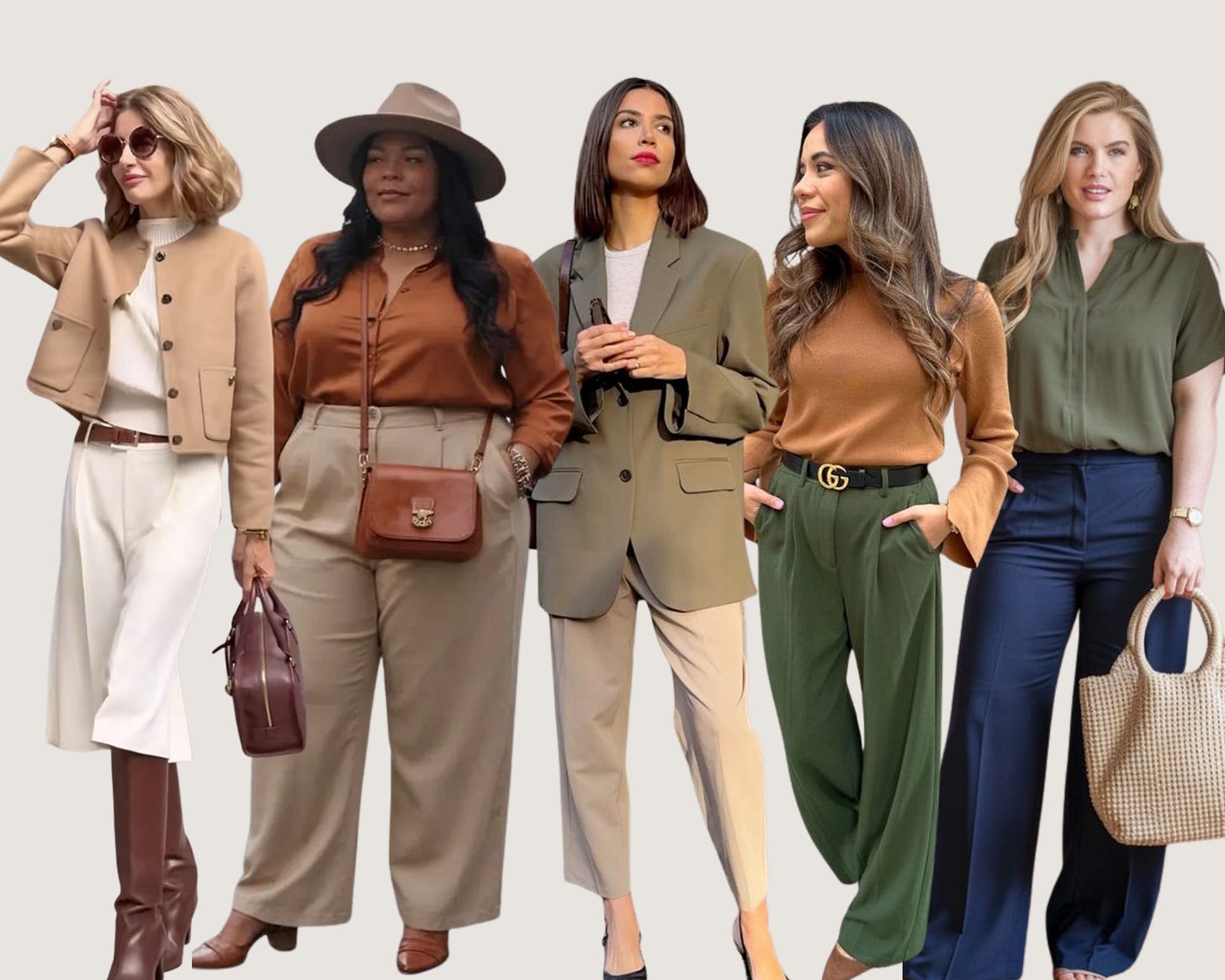
Your Challenge
This is quite a versatile color scheme and is likely possible in most closets! So my challenge to you is to try one analogous color combination this week with the clothes you have in your wardrobe.
You might want to start by picking out your bottom piece. (This assumes your bottoms are more limited in colors; if you find you have the reverse situation, then start with a top!) Your bottoms could be a skirt, trousers, or even a jumpsuit/dress you can layer.
Then consider what colors are next to it on the color wheel and see if you have any tops in that color. If not, do you have any shoes, bags, or accessories in that color? Try that outfit out!
Sometimes the answer to that final question is no — that's fine. I have an orange skirt with virtually no red or yellow tops or accessories. That skirt won't work with an analogous color scheme with what I have. But it can work with other color schemes.
If there is no analogous color in your closet with one particular piece, you can simply move on to trying it with another garment.
I had fun trying out several analogous combinations this week that helped me create new outfits. Again, this isn't about perfection! It's about finding new inspiration in what you already have.
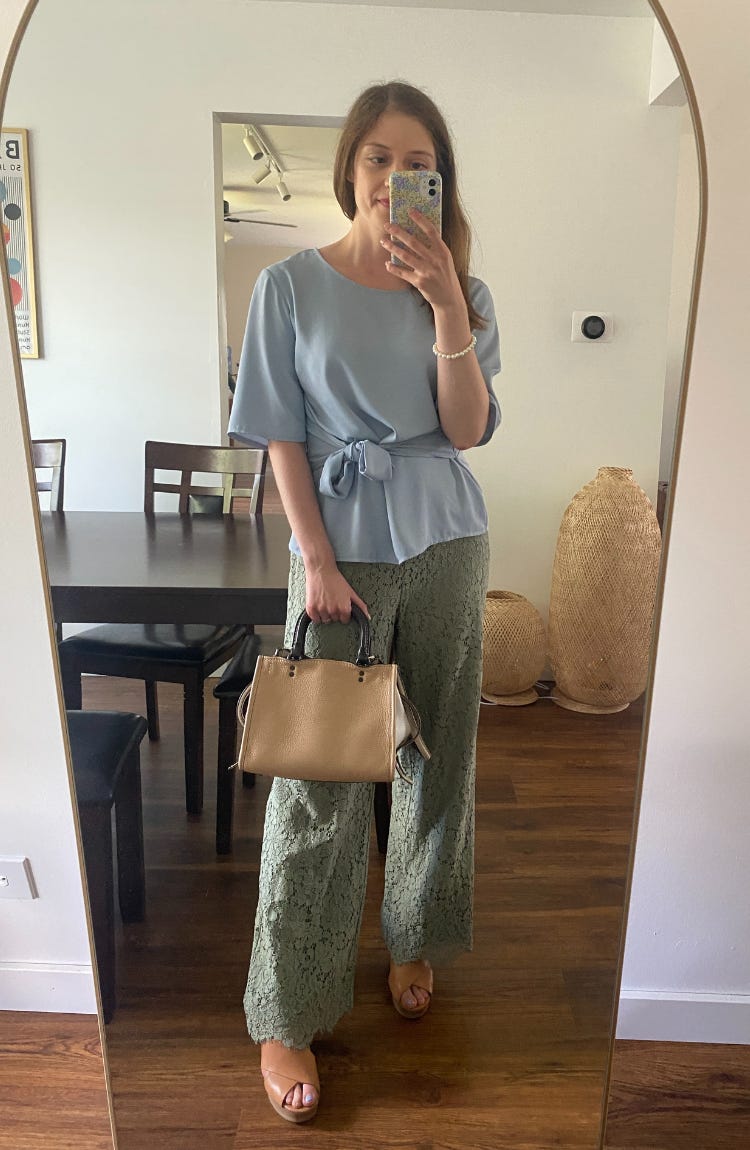
❓ Will you try this color scheme? Have you worn it before? Let us know in the comments!
Excited to hear about how it goes. :)
And stay tuned for part three of Color Theory Outfit Combinations coming next week — be sure to subscribe if you're not already to get it. 💌
The Conscious Edit:
Long-time subscribers will remember that this newsletter used to be called Conscious Edit where I shared what I was reading, listening to, watching, and browsing. I'm going to bring back that section from time to time here! It won't always be exclusively fashion but will generally be related to sustainability.
📖 Reading:
Myth-Busting the Secondhand Industry: What Vintage Dealers Want You to Know | Pre-Loved by
There are SO many misconceptions of resale and resellers so this is a useful fact-check from secondhand expert Emily Stochl.
Senate Republicans just voted to dismantle America's only climate plan | Grist
“The [now-passed] legislation will make the deepest cuts to America’s social safety net in decades and unravel the country’s only existing federal plan to diminish the greenhouse gas emissions driving climate change.”
🌏 Support: Earthjustice
Earthjustice is a nonprofit public interest environmental law organization dedicated to protecting people's health, preserving wildlife, advancing clean energy, and combatting climate change. Founded over five decades ago, Earthjustice has been behind many landmark environmental cases in the US.
And the organization is planning to take legal pathways to fight back against some of the bill's attacks on clean air and our environment. Donations made by July 15 will be matched.
🎧 Listening To:
How to Gain Control Over Your Mind, The Healing Power of Discomfort, and the True Essence of Happiness on Feel Better, Live More: While the guest, Dr. Alok Kanojia, spoke most specifically to internet & gaming addictions, I saw so many connections to shopping habits as well. It was fascinating to learn the science behind why doing hard things actually supports our mental health and how meditation can be transformative in helping us disrupt detrimental habits.
The Wellness Scoop: There is no shortage of misinformation in the health and wellness space. So I appreciate the nuanced and, importantly, science-backed approach from Ella Mills and Registered Nutritionist Rhiannon Lambert each week on their podcast, particularly their realistic (and often plant-based-friendly) tips.
See you next week!
xx Elizabeth






Loving these weekly assignments/challenges! Appreciate all of your time and efforts with these informative Saturday updates!
THIS is such a masterclass on color pairing. So insightful!